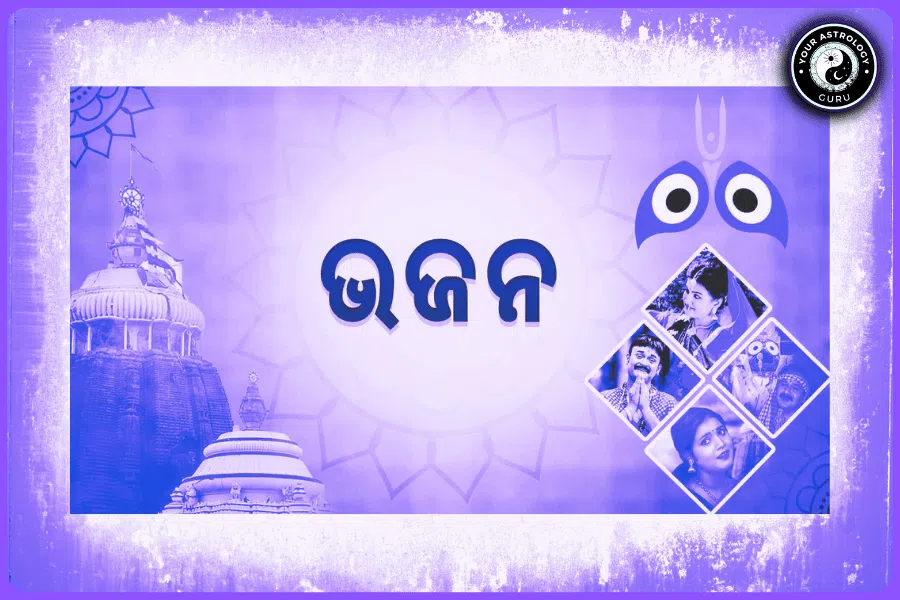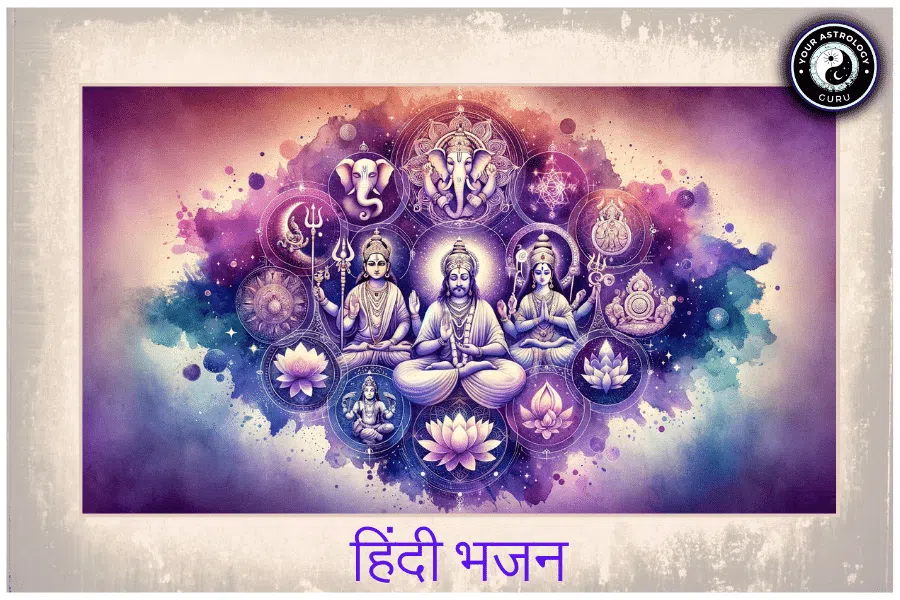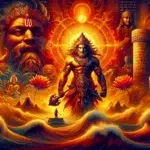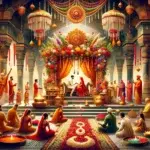Markandya Puran is one of the eighteen Mahapuranas, a genre of ancient Indian texts that are considered sacred in Hinduism. It is named after the sage Markandya, who is believed to be the narrator of the epic tale. The Purana is a compilation of stories, legends, and teachings that revolve around the themes of creation, destruction, and rebirth. It is an important text in Hinduism as it provides insights into the origins of the universe, the gods and goddesses, and the moral and ethical principles that guide human life.
Hinduism is a complex and diverse religion with a rich mythology and a vast collection of sacred texts. The Mahapuranas, including Markandya Puran, play a crucial role in preserving and transmitting the religious and cultural heritage of Hinduism. They are considered to be repositories of knowledge and wisdom, providing guidance on various aspects of life such as rituals, ethics, philosophy, and spirituality. Markandya Puran, in particular, is revered for its profound teachings on dharma (righteousness), karma (action and its consequences), and moksha (liberation from the cycle of birth and death). It is believed to have been composed thousands of years ago and has since been passed down through generations as an invaluable source of spiritual wisdom.
Table of Contents
The Origin and Significance of Markandya Puran
The historical background of Markandya Puran is not well-documented, as it belongs to a time when written records were scarce. However, it is believed to have originated in ancient India during the Vedic period. The Purana is named after Sage Markandya, who is said to have recited the tales contained within it to his disciple Bhrigu. These stories were then passed down orally from generation to generation before being compiled into a written text.
The significance of Markandya Puran lies in its role as a repository of ancient wisdom and knowledge. It provides insights into the cosmology, mythology, and philosophy of Hinduism, shedding light on the origins of the universe, the gods and goddesses, and the moral and ethical principles that guide human life. The Purana also serves as a guide for religious rituals and practices, offering instructions on how to perform various ceremonies and observances. It is considered to be a sacred scripture that is revered by millions of Hindus around the world.
The Structure and Content of Markandya Puran
Markandya Puran is divided into nine sections, known as Khandas. Each Khanda consists of several chapters, which contain stories, legends, and teachings related to various aspects of Hindu mythology and philosophy. The structure of the Purana follows a narrative format, with each chapter building upon the previous ones to create a cohesive storyline.
The first Khanda, called Adi Khanda or the Book of Origins, provides an account of the creation of the universe and the birth of the gods and goddesses. It also introduces the concept of dharma and explores the importance of righteous living.
The second Khanda, called Srishti Khanda or the Book of Creation, delves deeper into the creation of the universe and describes the different realms and worlds that exist within it. It also introduces various deities and their roles in maintaining cosmic order.
The third Khanda, called Sati Khanda or the Book of Sati, tells the story of Sati, the wife of Lord Shiva, and her tragic end. It explores themes of devotion, sacrifice, and divine love.
The fourth Khanda, called Vamana Khanda or the Book of Vamana, focuses on the story of Lord Vishnu’s incarnation as Vamana, the dwarf. It explores the themes of humility, devotion, and the triumph of good over evil.
The fifth Khanda, called Jnanasamhita Khanda or the Book of Knowledge, contains teachings on various aspects of spiritual wisdom and philosophy. It explores topics such as meditation, yoga, and the nature of reality.
The sixth Khanda, called Uttara Khanda or the Book of Conclusion, provides a summary of the previous chapters and offers guidance on how to live a righteous and fulfilling life.
The Main Characters and their Roles in the Epic Tale
Markandya Puran features a wide range of characters, including gods, goddesses, sages, demons, and humans. Each character plays a specific role in the epic tale, contributing to the overall narrative and conveying important moral and ethical lessons.
Some of the main characters in Markandya Puran include:
– Sage Markandya: The narrator of the epic tale, Sage Markandya is a revered sage known for his wisdom and knowledge. He plays a central role in the Purana, recounting the stories and teachings contained within it.
– Lord Brahma: The creator of the universe, Lord Brahma is one of the most important deities in Hinduism. He is responsible for bringing forth life and maintaining cosmic order.
– Lord Vishnu: The preserver and protector of the universe, Lord Vishnu is one of the most widely worshipped deities in Hinduism. He takes on various incarnations (avatars) to restore balance and defeat evil forces.
– Lord Shiva: The destroyer and transformer of the universe, Lord Shiva is a complex deity associated with destruction, creation, and spiritual enlightenment. He is often depicted as a meditating ascetic or as Nataraja, the cosmic dancer.
– Goddess Parvati: The consort of Lord Shiva, Goddess Parvati represents feminine power and energy. She is often depicted as a nurturing and compassionate figure, embodying the qualities of a devoted wife and mother.
– King Pururava: A legendary king, King Pururava is known for his love for the Apsara Urvashi. His story explores themes of desire, attachment, and the transient nature of worldly pleasures.
– Apsara Urvashi: A celestial nymph, Apsara Urvashi is renowned for her beauty and grace. Her story with King Pururava highlights the challenges of love and the importance of detachment.
The Creation of the Universe and the Gods
According to Markandya Puran, the universe was created by Lord Brahma through a process known as Srishti. In the beginning, there was only darkness and chaos. Lord Brahma emerged from a golden egg (Hiranyagarbha) and brought order to the universe. He created the earth, the sky, and all living beings.
The gods and goddesses were also created by Lord Brahma to assist him in maintaining cosmic order. Lord Vishnu was appointed as the preserver and protector of the universe, while Lord Shiva was given the role of destruction and transformation. Goddess Parvati was created as Lord Shiva’s consort, representing feminine energy and power.
The gods and goddesses are depicted as divine beings with supernatural powers and abilities. They are worshipped by humans as manifestations of the divine and are believed to intervene in human affairs to ensure justice and righteousness.
The Story of King Pururava and the Apsara Urvashi
One of the most famous stories in Markandya Puran is that of King Pururava and the Apsara Urvashi. King Pururava was a noble and virtuous ruler who fell in love with Urvashi, a celestial nymph known for her beauty and grace.
Their love story explores the themes of desire, attachment, and the transient nature of worldly pleasures. Despite their deep love for each other, King Pururava and Urvashi were unable to be together due to the divine laws that govern the celestial realms. Urvashi was eventually forced to return to her celestial abode, leaving King Pururava heartbroken.
The story of King Pururava and Urvashi serves as a cautionary tale about the dangers of attachment and the impermanence of worldly pleasures. It teaches the importance of detachment and the need to focus on spiritual growth and self-realization.
The Tale of Sage Markandya and his Encounter with Lord Vishnu
Another significant story in Markandya Puran is that of Sage Markandya and his encounter with Lord Vishnu. Sage Markandya was a devoted disciple of Lord Vishnu and had dedicated his life to the pursuit of spiritual knowledge.
One day, while meditating on the banks of a river, Sage Markandya was visited by Lord Vishnu in the form of a young boy. The boy appeared to be drowning in the river, and Sage Markandya rushed to save him. In gratitude, Lord Vishnu granted Sage Markandya a boon, allowing him to witness the destruction and rebirth of the universe.
Sage Markandya’s encounter with Lord Vishnu highlights the importance of devotion and surrender in the path of spiritual enlightenment. It emphasizes the need for humility and selflessness in one’s spiritual journey.
The Destruction of the Universe and the Battle of Good and Evil
According to Markandya Puran, the universe goes through cycles of creation, destruction, and rebirth. The destruction of the universe is brought about by Lord Shiva through a process known as Pralaya. During this time, all living beings are annihilated, and only Lord Shiva remains.
The destruction is followed by a battle between the forces of good and evil. The demons, led by their king, Tarakasura, wage war against the gods and goddesses. The battle is fierce and lasts for thousands of years, with both sides displaying extraordinary powers and abilities.
The demons represent the forces of darkness, ignorance, and ego, while the gods symbolize righteousness, knowledge, and selflessness. The battle between good and evil serves as a metaphor for the eternal struggle between these opposing forces within human beings.
The Rebirth of the Universe and the Role of Lord Brahma
After the destruction of the universe, Lord Brahma takes on the role of creator once again. He brings forth life and restores cosmic order. The rebirth of the universe is a time of renewal and rejuvenation, symbolizing the cyclical nature of existence.
Lord Brahma creates new beings and assigns them their roles in the cosmic drama. The gods and goddesses are reborn to continue their divine duties, while humans are given the opportunity to learn from their past mistakes and evolve spiritually.
The rebirth of the universe emphasizes the concept of karma, which states that every action has consequences. It teaches that individuals are responsible for their actions and that they will reap what they sow in future lives.
The Significance of Markandya Puran in Hinduism and its Influence on Indian Culture
Markandya Puran holds immense significance in Hinduism as it provides insights into the origins of the universe, the gods and goddesses, and the moral and ethical principles that guide human life. It is considered to be a sacred scripture that is revered by millions of Hindus around the world.
The Purana has had a profound influence on Indian culture, shaping religious practices, rituals, art forms, literature, and philosophy. It has inspired countless works of literature, including plays, poems, and novels. It has also influenced various art forms, such as painting, sculpture, and dance.
Markandya Puran has played a crucial role in preserving and transmitting the religious and cultural heritage of Hinduism. It has provided guidance and inspiration to generations of Hindus, helping them navigate the complexities of life and find meaning and purpose in their existence.
The Timeless Message of Markandya Puran for Modern Times
The timeless message of Markandya Puran is as relevant today as it was thousands of years ago. The epic tale explores universal themes such as creation, destruction, love, devotion, attachment, detachment, good versus evil, and the pursuit of spiritual enlightenment.
In today’s fast-paced and materialistic world, the teachings of Markandya Puran serve as a reminder of the importance of leading a righteous and fulfilling life. The Purana encourages individuals to cultivate virtues such as compassion, honesty, humility, and selflessness. It teaches the value of spiritual growth and self-realization in finding lasting happiness and inner peace.
The relevance of Markandya Puran lies in its ability to provide guidance and inspiration to individuals seeking meaning and purpose in their lives. It offers a moral compass that can help navigate the complexities of modern life and make choices that are aligned with one’s higher self.
In conclusion, Markandya Puran is a sacred scripture that holds immense significance in Hinduism. It provides insights into the origins of the universe, the gods and goddesses, and the moral and ethical principles that guide human life. The epic tale explores universal themes such as creation, destruction, love, devotion, attachment, detachment, good versus evil, and the pursuit of spiritual enlightenment. Its teachings are as relevant today as they were thousands of years ago, offering guidance and inspiration to individuals seeking meaning and purpose in their lives.














